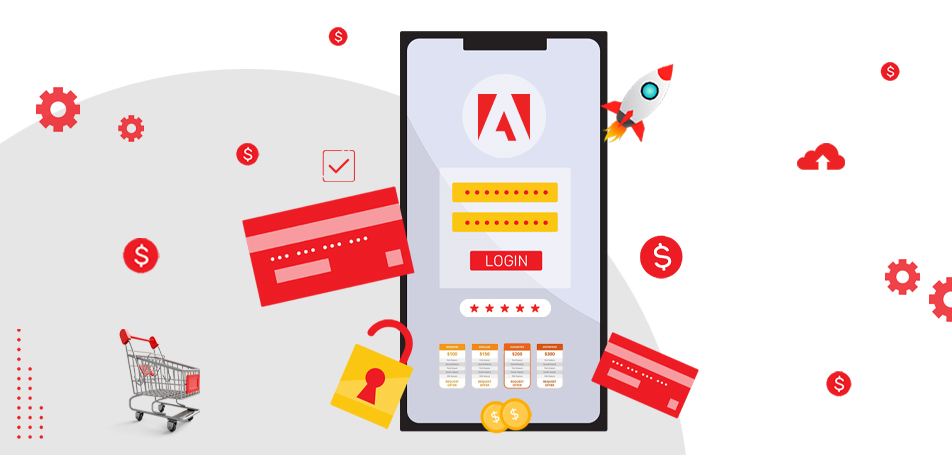
Navigating Adobe Commerce pricing can feel like a maze with varying editions, fluctuating costs, and seasonal peaks. This guide will walk you through the editions and factors that impact pricing, helping you make an informed decision for your eCommerce business.
Adobe Commerce has firmly established itself as a powerhouse in the ever-evolving world of eCommerce, seamlessly bringing together innovation with functionality like you have never seen before. Formerly known as Magento Commerce, Adobe Commerce is widely celebrated across the globe for powering top-notch digital storefronts, empowering businesses with a vast selection of tools.
A renowned premium eCommerce solution designed for businesses across the spectrum of complex needs, Adobe Commerce is, unsurprisingly, one of the most sought-after eCommerce solutions across the globe. Of course, this warrants a closer look at the price tag. And as I walk you through the intricacies of Adobe Commerce pricing, it is important to understand and remember the solutions this platform brings to the table. From customizable storefronts and seamless integrations to advanced analytics and marketing tools, Adobe Commerce is decidedly among the most compelling eCommerce platform choices.
Whether you are a small business looking to establish an online presence or a large enterprise seeking scalable eCommerce solutions, Adobe Commerce offers a suite of editions catering to diverse needs.
So, for the sake of informed decision-making, I will now guide you through the different editions and also dissect the different factors that influence this eCommerce offering’s cost.
Adobe Commerce Editions: A Quick Low-Down
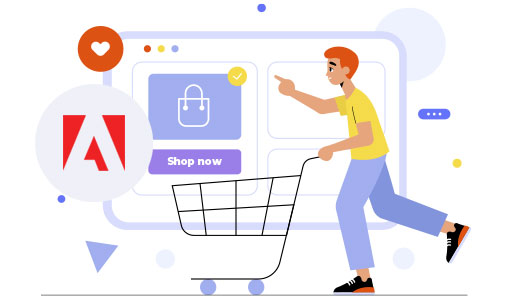
| Version Edition | Magento Open Source | Adobe Commerce | Adobe Commerce Cloud |
| Key Features | eCommerce Tools: Seamless management of products, orders, customers, and content. Sizeable Library: Access to a marketplace of free and paid extensions for customization. | Community Support: Access to community-driven guidance, troubleshooting, and more. Scalability and Security: Robust infrastructure and advanced security for high traffic. B2B and B2C Capabilities: Manage wholesale relationships, personalized pricing, and more. Marketing Automation and Personalization: Targeted campaigns and AI-powered recommendations. Seamless Integrations: Connects to existing tech stack and payment gateways. | Advanced Analytics and Reporting: Actionable insights via comprehensive tools. Scalability: Automatic scaling and elastic infrastructure for millions of visitors and orders. Global Reach: Multiple geographical regions for localized experiences. Built-in Security: PCI compliance, DDoS protection, advanced encryption. Integrations: Adobe Experience Cloud pre-built connectors for seamless integrations. |
| Costs | Free | Starter Edition: Starts at $20,000/year Professional Edition: Approx. $40,000/year Business Edition: Approx. $60,000/year Enterprise Edition: Custom pricing | Custom Pricing: Min. annual commitment starting at $125,000/year |
| Best For | Startups, Small Businesses | Growing, Medium Businesses | Enterprises with global reach |
| Additional Costs | Hosting, Extensions | Development/Maintenance, Implementation and Customization, Training and Support, Transaction Fees | Implementation and Customization, Training and Support, Third-party Integrations |
You and I both know that one size truly does not fit all, especially in the world of eCommerce. So, come take a closer look at the diverse offerings this platform brings to the table, i.e. the different versions, their features, information about Adobe Commerce costs, and all the basics you need to understand which of these offerings may be best suited for your business’ requirements.
Magento Open Source
People or businesses that are just starting out in the world of online entrepreneurship and with a limited budget, Magento Open Source is a good starting point within the Adobe Commerce ecosystem. This version, which can be used free of charge by the way, provides a cost-effective way to set up a digital storefront, allowing owners and their teams to innovate and drive forth their brand identity without being held back by initial financial constraints.
Looking for an agency that can help you choose the right version?
Navigating Adobe Commerce’s various editions and pricing structures can be complex. Get guidance from Wagento team to find the best version for your eCommerce business.
Key Features:
- eCommerce Tools: Magento Open Source allows you to seamlessly manage products, orders, customers, and content via a user-friendly interface
- Sizeable Library: Besides the freedom to customize the store extensively, this version also offers access to a big marketplace of both free and paid extensions. So, you can easily tailor the store in light of your brand’s identity.
- Community Support: This iteration is also fortified by a thriving community of developers and merchants, meaning you also get access to community-driven guidance, troubleshooting, and so much more.
Costs and Considerations:

While Magento Open Source itself is a free platform, do not forget to factor in associated expenses such as the ones listed below:
- Hosting
- Extensions
- Development/Maintenance
Adobe Commerce
Next name on this list is Adobe Commerce, formerly Magento Commerce, which has now emerged as the go-to solution for established businesses that are looking to take things up by a few notches. This version makes for a good choice for brands that are looking to offer omnichannel experiences or those with intricate operations. And no matter the reason you opt for Adobe Commerce, you can rest assured that it will be a feature-packed journey that can easily cater to the complexities of enterprise-level demands.
Key Features:

- Scalability and Security: Thanks to its robust infrastructure and advanced security features, Adobe Commerce helps eCommerce stores contend with high traffic volumes and safeguard their sensitive data.
- B2B and B2C Capabilities: This version is also conducive to the streamlined management of wholesale relationships, personalized pricing, and multi-store setups.
- Marketing Automation and Personalization: Adobe Commerce enables targeted campaigns, dynamic content, and AI-powered recommendations to help you deliver personalized shopping experiences.
- Seamless Integrations: The platform can be seamlessly connected with the eCommerce company’s existing tech stack, marketplaces, and payment gateways to ensure a fully integrated digital ecosystem for the business.
- Advanced Analytics and Reporting: Adobe Commerce also provides actionable insights to help online store owners optimize their eCommerce strategy via comprehensive analytics and reporting tools.
Pricing and Structures:
Adobe Commerce offers a subscription-based model with four editions:
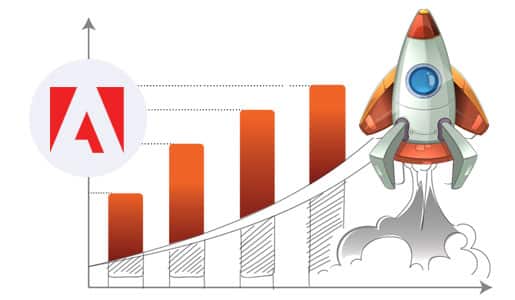
- Starter Edition: Starting at $20,000 per year, the Starter Edition is suitable for small businesses with basic requirements.
- Professional Edition: At approximately $40,000 per year, this edition includes B2B features and marketing automation tools.
- Business Edition: Priced at around $60,000 per year, the Business Edition offers advanced B2B capabilities, analytics, and customization.
- Enterprise Edition: Adobe offers the Enterprise Edition with custom pricing for high-volume businesses. This version includes exceptional levels of scalability and a comprehensive suite of features.
Costs and Considerations:
Besides the subscription cost, the following expenses can be expected:
- Implementation and Customization
- Training and Support
- Transaction Fees
Adobe Commerce on Cloud
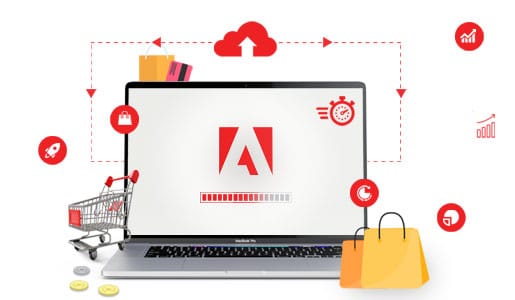
Adobe Commerce on Cloud is the fully hosted, next-generation iteration of Adobe Commerce. Underpinned by cloud-powered agility and high-levels of scalability, this iteration is suited for global brands with ambitious omnichannel strategies.
Features:
- Scalability: Driven by features such as automatic scaling and elastic infrastructure, which translate into exceptional performance, Adobe Commerce Cloud empowers your store to effortlessly handle millions of visitors and orders
- Global Reach: With this version, you can deploy your store in multiple geographical regions, leveraging dedicated infrastructure to provide localized and seamless experiences for customers across the world.
- Built-in Security: Adobe Commerce Cloud also benefits from world-class security enabled by PCI compliance, DDoS protection, and advanced data encryption.
- Integrations: The solution can be integrated with all business systems and marketplaces through Adobe Experience Cloud pre-built connectors.
Pricing and Structures:
Adobe Commerce Cloud is offered with a custom-based pricing strategy that is tailored to a business’ unique needs and transaction volume. However, here are some details you ought to know:
- The cost involves a minimum annual commitment that usually starts at $125,000 per year.
- Additional fees per transaction may apply.
Costs and Considerations:
Beyond the subscription cost, keep in mind the following additional expenses:
- Implementation and Customization
- Training and Support
- Third-party Integrations
Now that you are all caught up with the different Adobe Commerce editions and their respective costs and pricing strategies, it is time to discuss the factors that tend to contribute to the dynamic nature of Adobe Commerce’s pricing.
Meet the Variables: A Close-Up of the Factors that Drive Adobe Commerce Costs
Seasonal Demand
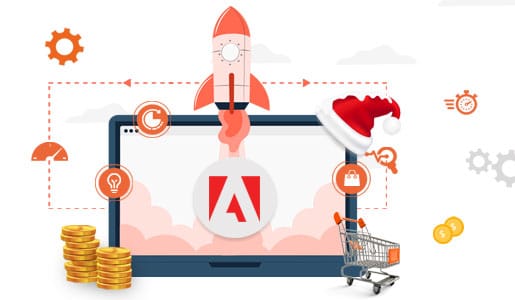
Amidst the festive cheer, it is imperative to consider how seasonal demand affects your Adobe Commerce costs. For Adobe Commerce, the transaction-based pricing model means during peak seasons both the order volume and costs will see a surge. So, be prepared for billing spikes during high-demand periods, optimize resources with features such as automatic scaling, and strategically promote deals during off-peak times.
Technological Advancements
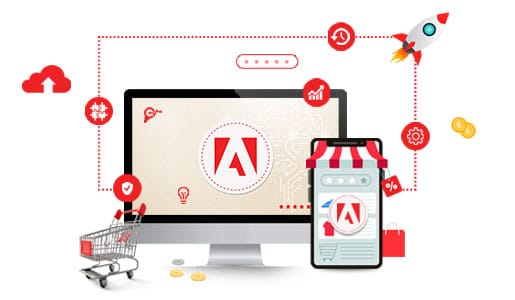
In the world of eCommerce, technological evolution is constant. Adobe Commerce too regularly brings in new features and integrations to enhance business and these innovations tend to come at a cost. What I mean is that new features may involve additional fees and staying at the top of your game may also involve licensing and implementation expenses. To manage your costs in this context, it would be a clever idea to prioritize upgrades, maximize current features, and keep an eye on Adobe’s roadmap.
Still Unsure of the Choice You Need to Make?
Wagento’s experts can guide you through Adobe Commerce’s editions and pricing, helping you find the best solution for your eCommerce needs.
Factors Affecting Adobe Commerce (Magento) Pricing
Licensing Costs:
- Magento Open Source: Free to use.
- Adobe Commerce & Adobe Commerce Cloud: License fee varies based on Gross Merchandise Value (GMV).
- Approximate Annual License Fees:
| GMV Range | Adobe Commerce | Adobe Commerce Cloud |
| Less than $1M | $22,000 | $40,000 |
| $1M – $5M | $32,000 | $55,000 |
| $5M – $10M | $49,000 | $80,000 |
| $10M – $25M | $75,000 | $120,000 |
| More than $25M | $125,000 | $190,000 |
Hosting:
- Adobe Commerce Cloud: Hosting included.
- Magento Open Source & Adobe Commerce: Self-hosted or via cloud vendor.
- On-premises: Costs include server hardware, backup systems, and software licensing.
- Server: $5,000 – $15,000
- Backup System: ~$2,000
- Software Licensing: ~$1,500 per server
- Cloud Hosting: Scalable monthly fee ($130 – $2,000/month) based on functionality and data needs.
Domain Name Costs:
- New domain: ~$10 – $20 per year
- Renew expired domain: Up to ~$60 per year
- Premium domains: Up to ~$400 – $500 annually
Secure Socket Layer (SSL) Certification:
- Adobe Commerce & Adobe Commerce Cloud: SSL included.
- Magento Open Source: SSL purchased separately.
- Annual cost: $50 – $600 (premium options up to $1,000)
Web Store Design/Themes:
- Pre-built Themes: Adobe Marketplace: $60 – $499
- External Vendors: ThemeForest: $17 – $499
- Custom-built Themes: Starting cost: $5,000. Depends on UI/UX requirements and mobile compatibility.
Development Costs:
- In-house Developer: $60,000 – $120,000/year
- Dedicated Team of Magento Developers:
- US: ~$100/hour
- Costs include:
- Store and catalog setup
- Theme development and customization
- eCommerce feature configuration (payment gateways, taxes, etc.)
Extensions and Add-ons:
- Ready-made extensions: $0 – $10,000
- Custom eCommerce development: Minimum $6,000 per add-on
Fees Related to Payment Transactions:
- 2% – 4% per transaction value
- PayPal and Stripe: 2.9% transaction fee
SEO and Digital Marketing:
- SEO Expert Consultation: Hourly Rate: $15 – $35. 20-40 working hours required.
- Advanced SEO Add-ons for Magento Open Source
Artificial Intelligence:
- Adobe Commerce & Adobe Commerce Cloud: Business intelligence dashboards and AI capabilities via Adobe Sensei.
- Magento Open Source: Custom AI implementation required. Intelligent Recommendation Engine: $20,000 – $35,000
Maintenance:
- Adobe Commerce & Adobe Commerce Cloud: Technical support included. Server-side maintenance, updates, and security patches (Cloud only).
- Magento Open Source: Monthly maintenance: ~$7,500
These factors collectively influence the overall cost and pricing structure of Adobe Commerce (Magento).
Get Business Analysis and Personalized Guidance
Benefit from tailored insights and recommendations that align with your unique business goals. Wagento’s team will provide comprehensive business analysis and guide you through Adobe Commerce’s pricing models, ensuring you choose the best solution for your eCommerce needs.
User Demands and Expectations
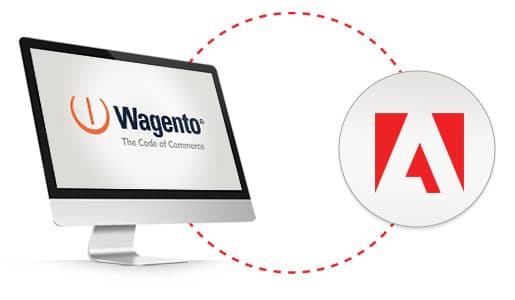
In today’s digitally inclined age, seamless experiences and instant gratification are a must. In the context of eCommerce, this means merchants must deal with user expectations, such as AI-powered recommendations, frictionless omnichannel experiences, etc. And as you know, these enhancements come with a cost attached. So, make sure to prioritize features based on your core target audience and customer base. Additionally, leveraging data insights to enhance user experience strategically and testing new introductions before signing the dotted line is a good idea too.
Let’s face it, navigating the Adobe Commerce cost landscape can feel a bit overwhelming — at least at the outset. Between fluctuating transaction fees, feature upgrades, and ever-evolving customer demands, it is not surprising that some merchants find themselves struggling. But fear not, for the above discussion will help you navigate the pricing puzzle with relative ease. Remember, always prioritize and analyze before investing. Choose a wise version of eCommerce platform for your online store.
Comparison of features between Magento Open Source, Adobe Commerce, and Adobe Commerce Cloud
| Feature | Magento Open Source | Adobe Commerce | Adobe Commerce Cloud |
| Core store management features | Yes | Yes | Yes |
| Site search | Basic | Advanced | Advanced |
| Visual merchandising | No | Yes | Yes |
| Analytics and reporting | Basic | Business intelligence dashboards and AI-powered product recommendations through Adobe Sensei | Business intelligence dashboards and AI-powered product recommendations through Adobe Sensei |
| Customer segmentation | No | Yes | Yes |
| Loyalty programs (e.g., gift cards) | No | Yes | Yes |
| Search engine optimization (SEO) | Yes | Yes | Yes |
| Fast page loading | No | No | Yes |
| B2C capabilities | Yes | Yes | Yes |
| B2B capabilities | No | Yes | Yes |
| Hosting included | No | No | Yes (with 99.99% availability) |
| Community forums | Yes | Yes | Yes |
| Technical support | No | Yes | Yes |
| Performance monitoring | No | No | Yes |
| Security and compliance | Very limited | Offers some security and compliance features | Enhanced security with DDoS and Fastly WAF services, PCI compliant |
| Automated updates and patching | No | No | Yes |
Drop us a line if you want to receive an accurate cost estimation for your eCommerce project. We are a team of Certified Magento Experts. Whether it is consulting for feature prioritization, navigating through seasonal peaks, or even about leveraging the full potential of Adobe Commerce, Wagento’s highly experienced team can serve as a guide, ensuring a smoother and more successful experience with Adobe Commerce.















